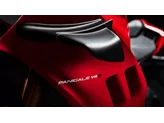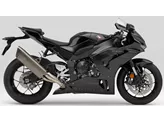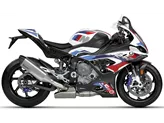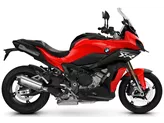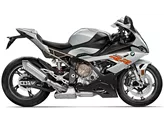BMW S 1000 RR 2020 vs. Ducati 1299 Panigale S 2016

BMW S 1000 RR 2020

Ducati 1299 Panigale S 2016
Overview - BMW S 1000 RR 2020 vs Ducati 1299 Panigale S 2016
The BMW S 1000 RR 2020 and the Ducati 1299 Panigale S 2016 are both high-performance supersport motorcycles that offer impressive specifications and features.
In terms of engine and drivetrain, the BMW S 1000 RR 2020 is equipped with a 999cc engine that delivers 207 HP of power and 113 Nm of torque. It has a bore of 80 mm and a stroke of 49.7 mm, with a compression ratio of 13.3. On the other hand, the Ducati 1299 Panigale S 2016 features a larger 1285cc engine that produces 205 HP of power and 144.6 Nm of torque. It has a bore of 116 mm and a stroke of 60.8 mm, with a compression ratio of 12.6. Both bikes have upside-down telescopic fork front suspension with adjustable compression, preload, and rebound. The BMW S 1000 RR 2020 has a swing arm rear suspension with adjustable compression, preload, and rebound, while the Ducati 1299 Panigale S 2016 has a single swing arm rear suspension with adjustable compression and preload.

BMW S 1000 RR 2020
In terms of chassis, both bikes feature aluminum frames. The BMW S 1000 RR 2020 has a twin-tube, load-bearing engine frame, while the Ducati 1299 Panigale S 2016 has a monocoque frame. Both bikes have double disk front brakes with radial technology, but the Ducati 1299 Panigale S 2016 also has monoblock technology for enhanced braking performance. The front and rear tire dimensions are similar for both bikes, with the BMW S 1000 RR 2020 having a front tire width of 120 mm and a rear tire width of 190 mm, and the Ducati 1299 Panigale S 2016 having a front tire width of 120 mm and a rear tire width of 200 mm. Both bikes have a 17-inch front and rear tire diameter.
In terms of dimensions and weights, the BMW S 1000 RR 2020 has a wheelbase of 1441 mm and a seat height of 824 mm. It has a kerb weight (with ABS) of 197 kg and a fuel tank capacity of 16.5 liters. On the other hand, the Ducati 1299 Panigale S 2016 has a slightly smaller wheelbase of 1437 mm and a slightly higher seat height of 830 mm. It has a kerb weight (with ABS) of 190.5 kg and a fuel tank capacity of 17 liters.
When comparing the strengths of the two bikes, the BMW S 1000 RR 2020 is praised for its very linear power delivery, wide rev range, and excellent DDC (Dynamic Damping Control) system. It is also highly regarded for its super electronics package and harmonious overall package both on the road and on the racetrack. On the other hand, the Ducati 1299 Panigale S 2016 is praised for its great electronics package, shift assistant, and stunning looks. It is also known for its exceptional speed in the hands of expert riders.

Ducati 1299 Panigale S 2016
However, the BMW S 1000 RR 2020 does have some weaknesses. It is sometimes considered to be a bit "characterless" compared to other bikes in its class, such as the Aprilia and Honda. It also falls slightly behind on the spec sheet when compared directly to some of its competitors. On the other hand, the Ducati 1299 Panigale S 2016 is criticized for being exhausting on corner exit, having a narrow rev band, and emitting strong heat radiation to the rear end.
In conclusion, both the BMW S 1000 RR 2020 and the Ducati 1299 Panigale S 2016 offer impressive performance and features. The BMW S 1000 RR 2020 excels in terms of power delivery, electronics package, and overall package, while the Ducati 1299 Panigale S 2016 stands out for its electronics package, shift assistant, and aesthetics. However, the BMW S 1000 RR 2020 may lack some character and falls slightly behind on the spec sheet, while the Ducati 1299 Panigale S 2016 may be challenging to handle on corner exits and has a narrow rev band.
Technical Specifications BMW S 1000 RR 2020 compared to Ducati 1299 Panigale S 2016
Pros and Cons in comparison
Pros and Cons in comparison
BMW S 1000 RR 2020
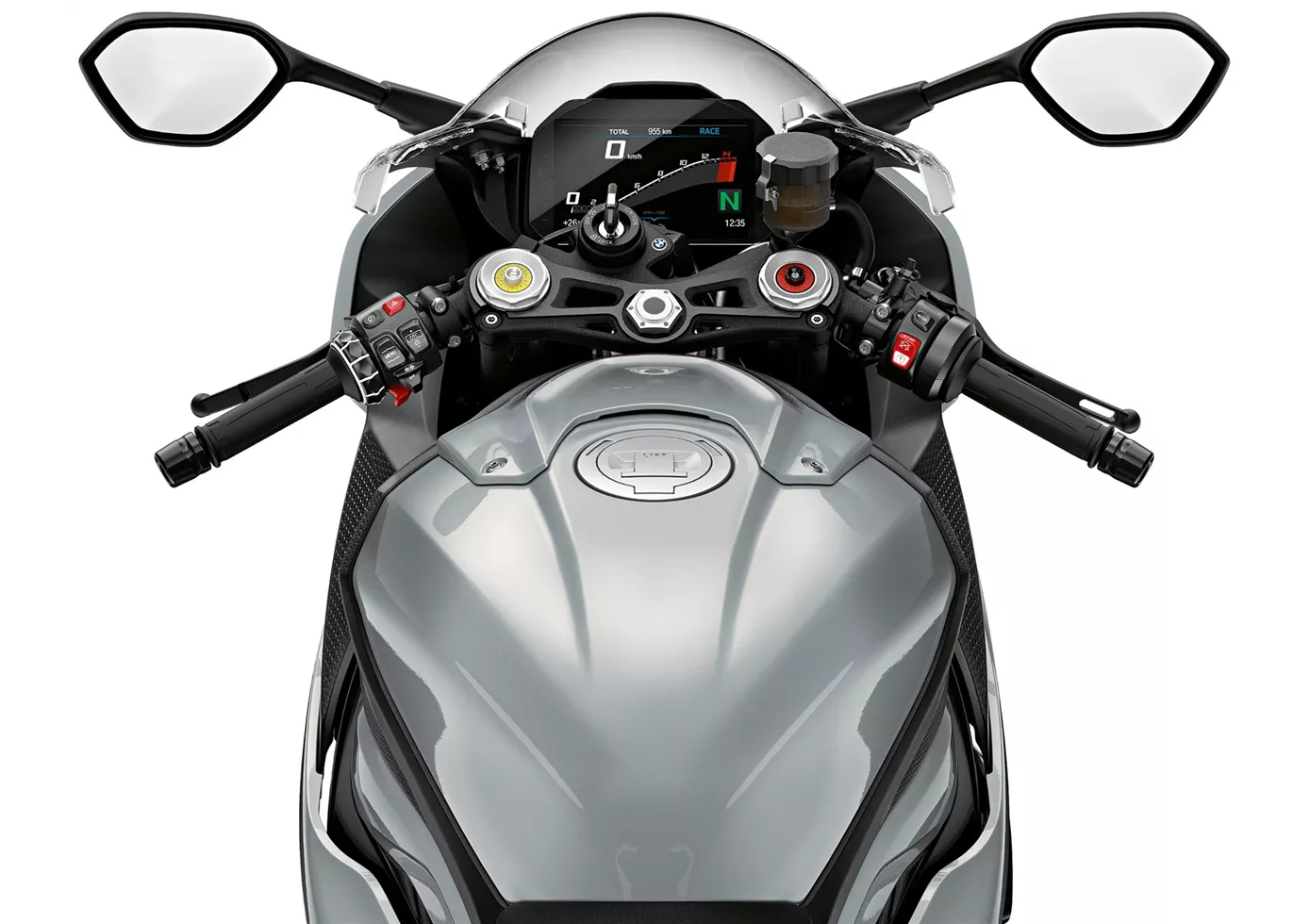
Une vraie superbike "à tout faire". Sur la piste de course comme sur la route, la BMW sait jouer de ses atouts. Grâce à la distribution variable de l'arbre à cames, le moteur puissant est déjà convaincant à bas régime et accélère harmonieusement sur toute la plage de régime, avec une puissance élevée dans tous les domaines. Pour le pilote amateur, le châssis fonctionne certainement de manière exceptionnelle dans toutes les situations, il garantit un feedback transparent et offre de nombreuses possibilités de réglage. La position de conduite est sportive, mais relativement confortable. L'électronique fonctionne de manière très harmonieuse sans infantiliser le pilote - TOP !
Ducati 1299 Panigale S 2016

Avec son bicylindre vrombissant et son look divin, elle vole encore la vedette aux autres motos du paddock lors du déchargement. L'ensemble électronique semble parfait, mais le châssis est un peu trop radical. Le V2 ravira les fans, mais risque d'être trop exigeant pour les débutants.
Price Comparison Avarage Market Price BMW S 1000 RR vs Ducati 1299 Panigale S
There are a few key differences between a BMW S 1000 RR 2020 and a Ducati 1299 Panigale S 2016. In terms of price, the actual average price of a Ducati 1299 Panigale S 2016 is about 5% higher. A BMW S 1000 RR 2020 experiences a loss of 430 USD in one year and 140 USD in two years of ownership. This is offset by a loss of 120 USD and 20 USD for a Ducati 1299 Panigale S 2016. Compared to Ducati 1299 Panigale S 2016 there are more BMW S 1000 RR 2020 bikes available on the 1000PS.de Marketplace, specifically 16 compared to 4. It takes less time to sell a BMW S 1000 RR with 68 days compared to 93 days for a Ducati 1299 Panigale S. Since model year 2010 1000PS.de editors have written 135 reviews for the BMW S 1000 RR and 13 reviews for the Ducati 1299 Panigale S since model year 2015. The first review for the BMW S 1000 RR was published on 4/16/2008 and now has more than 4,000 views. This compares to more than 44,500 views for the first review on Ducati 1299 Panigale S published on 11/3/2014.


